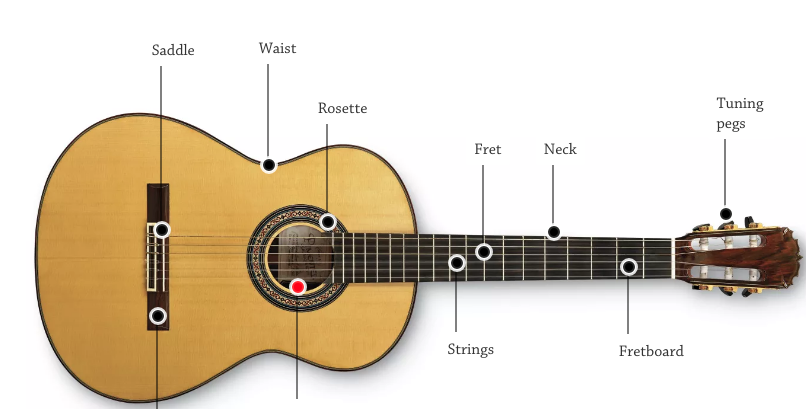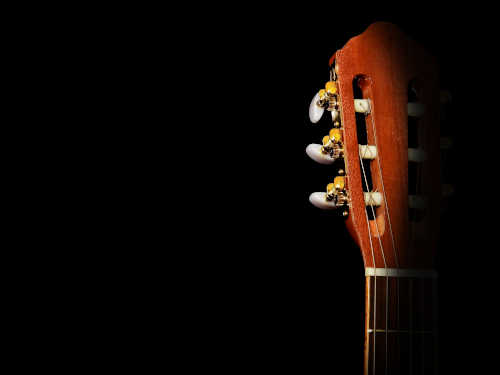Components of a Classical Guitar
The classical guitar is one of the most popular instruments in the world.
It is also very diverse, as you can play many different kinds of music on it. Almost every culture has its music. From the Spanish Guitars to the folklore of Iceland – each country has had its share with this instrument.
The guitar is usually made up of wood. It is a string based musical instrument. Meaning, it produces sounds by vibration. Normally, a guitar has 6 strings – which are stretched along its neck. In the center of the guitar, we have the sound hole.
The guitar is often played by fingers, however, you can also play it with plucks. It is an instrument loved by both adult and kids.


- Saddle is a curved bridge placed below the sound hole. On it, the guitar strings are stretched, and are run across the neck.
- Sound holes are usually found in acoustics and classical guitars. As they help to amplify the sound, that is why they are needed.
- The narrow portion of the guitar is called Waist.
- Around the sound hole, if you see a decoration or a design, then that is Rosette. These are usually found on nylon guitars or Spanish guitars.
- Frets are the small ridges found on the neck of the guitar. They help the player to identify musical notes, and to play different kinds of notes.
- This long part of the guitar, where the strings run is called Neck.
- Each of the string has a Turning Pig attached to it. These pigs allow you to change the stress on the strings. Which ultimately allows you to tune the guitar.
- Bridge is that heightened portion of the guitar where the strings are attached.
- Fretboard is the place where the frets are located. This is the place where the guitarists presses his finger to alter the tune made by the strings.
Wood Used In Classical Guitars
As a starting point for material selection, we assume that a classical guitar is made exclusively of wood, except for strings, frets, tuning machines, nut and saddle. Soundboard selection may include spruce, cedar, redwood, cypress, or mahogany among others.
The choice for a flamenco guitar is often spruce for the “concert” classical guitar or cypress. Various variants are used in the spruce (Picea) family, such as Alpine (Fichte), Sitka or Engelmann spruce.
The choice is often made based on the soundboard’s availability and price of wood, but the white “Fichte” features clearly differ from the harder and finer grained, slightly red-brown Sitka.
A thicker soundboard and adjusted sound bars are required to use a softer material for the top like red cedar.